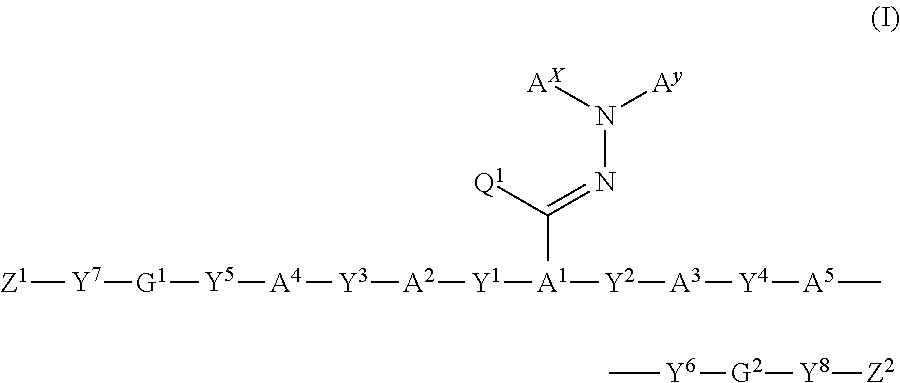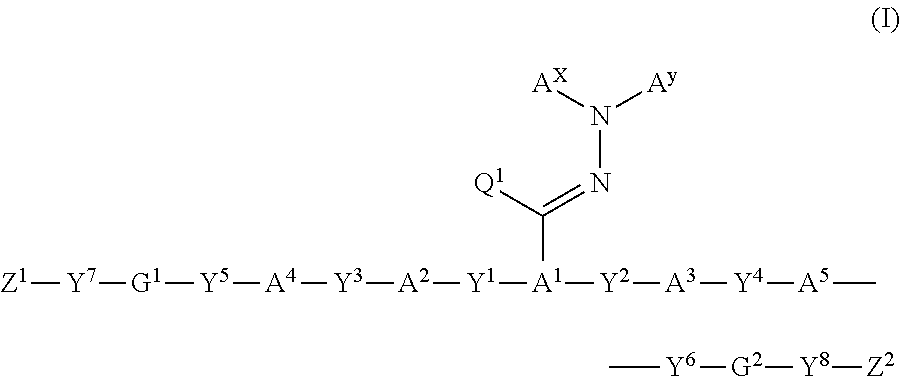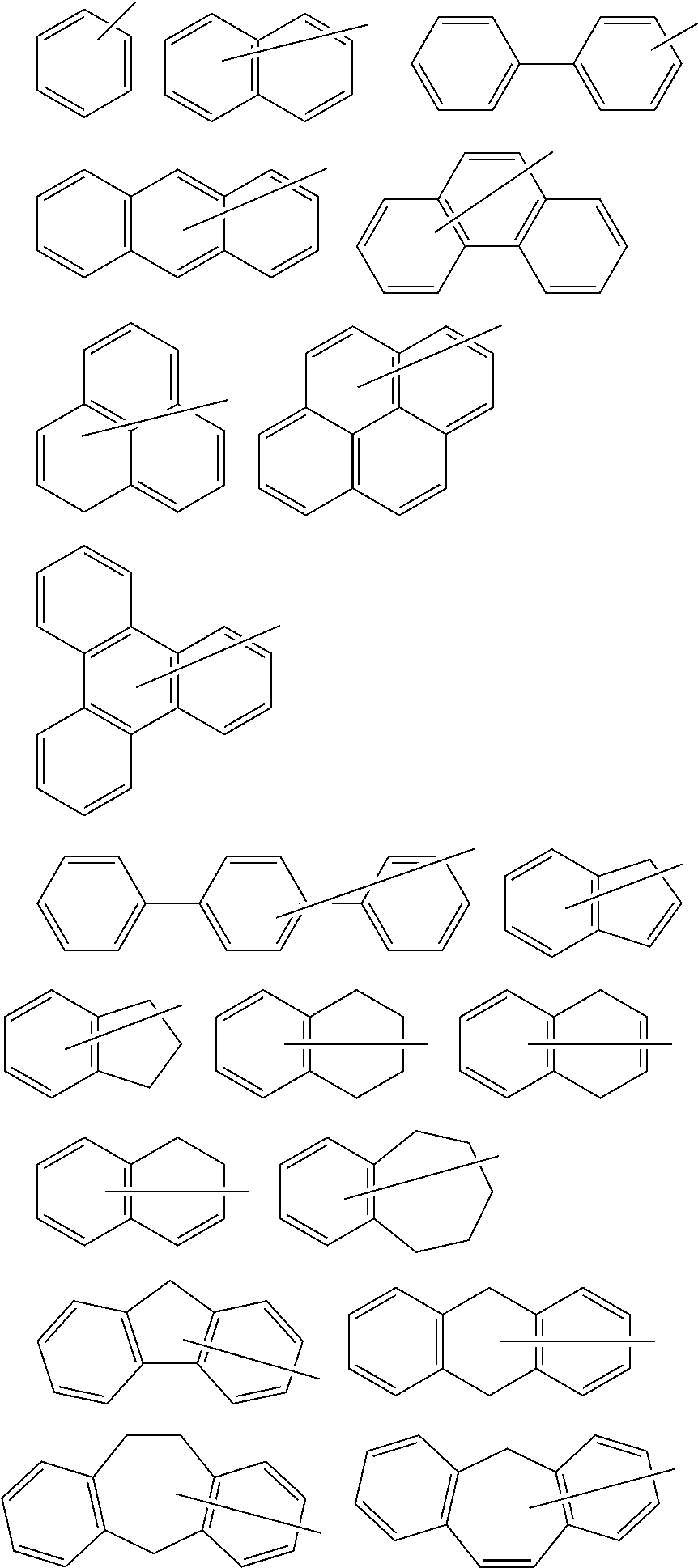Polymerizable compound, polymerizable composition, polymer, and optical anisotropic body
a technology of polymerizable compounds and compounds, applied in the direction of optical elements, instruments, organic chemistry, etc., can solve the problems of inability to achieve accurate 14 or 12 retardation over the entire wavelength band, etc., to achieve uniform conversion of polarized light, improve performance, and inexpens
- Summary
- Abstract
- Description
- Claims
- Application Information
AI Technical Summary
Benefits of technology
Problems solved by technology
Method used
Image
Examples
example 1
Synthesis of Compound 1
[0256]
Step 1: Synthesis of Intermediate a
[0257]
[0258]A three-necked reactor equipped with a thermometer was charged with 18.0 g (123 mmol) of adipic acid and 250 ml of tetrahydrofuran (THF) under a nitrogen stream to prepare a homogeneous solution. The reactor was immersed in an ice bath to adjust the temperature inside the reactor to 0° C. 10.0 g (77.4 mmol) of N,N-diisopropylethylamine was slowly added dropwise to the solution, and a solution prepared by dissolving 4.23 g (36.9 mmol) of methanesulfonyl chloride in 50 ml of THF was slowly added dropwise to the mixture. After the dropwise addition, the mixture was stirred for 45 minutes. 9.5 g (35.9 mmol) of 4-(6-acryloyloxyhex-1-yloxy)phenol (manufactured by DKSH Japan K.K.) was added to the resulting reaction mixture to prepare a solution. 6.0 g (46.4 mmol) of N,N-diisopropylethylamine was slowly added dropwise to the solution. After the dropwise addition, 0.38 g (3.1 mmol) of 4-(dimethylamino)pyridine was a...
synthesis example 1
Synthesis of Compound α
[0273]
Step 1: Synthesis of Intermediate X
[0274]
[0275]A three-necked reactor equipped with a thermometer was charged with 17.98 g (104.42 mmol) of trans-1,4-cyclohexanedicarboxylic acid and 180 ml of THF under a nitrogen stream. After the addition of 6.58 g (57.43 mmol) of methanesulfonyl chloride to the mixture, the reactor was immersed in a water bath to adjust the temperature inside the reactor to 20° C. 6.34 g (62.65 mmol) of triethylamine was added dropwise to the reaction mixture over 10 minutes while maintaining the temperature inside the reactor at 20 to 30° C. After the dropwise addition, the water bath was removed, and the mixture was stirred at room temperature (23° C.) for 2 hours. After the addition of 0.64 g (5.22 mmol) of 4-(dimethylamino)pyridine and 13.80 g (52.21 mmol) of 4-(6-acryloyloxyhex-1-yloxy)phenol to the reaction mixture, the reactor was immersed in a water bath to adjust the temperature inside the reactor to 15° C. 6.34 g (62.65 mmol...
example 2
[0293]0.3 g of the compound 1 obtained in Example 1, 0.7 g of the compound α obtained in Synthesis Example 1, 30 mg of a photoinitiator (“Adekaoptomer N-1919” manufactured by Adeka Corporation), and 100 mg of a 1% cyclopentanone solution of a surfactant (“KH-40” manufactured by AGC Seimi Chemical Co., Ltd.) were dissolved in 2.3 g of cyclopentanone. The solution was filtered through a disposable filter having a pore size of 0.45 μm to prepare a polymerizable composition 1.
PUM
| Property | Measurement | Unit |
|---|---|---|
| boiling point | aaaaa | aaaaa |
| reaction temperature | aaaaa | aaaaa |
| boiling point | aaaaa | aaaaa |
Abstract
Description
Claims
Application Information
 Login to View More
Login to View More - R&D
- Intellectual Property
- Life Sciences
- Materials
- Tech Scout
- Unparalleled Data Quality
- Higher Quality Content
- 60% Fewer Hallucinations
Browse by: Latest US Patents, China's latest patents, Technical Efficacy Thesaurus, Application Domain, Technology Topic, Popular Technical Reports.
© 2025 PatSnap. All rights reserved.Legal|Privacy policy|Modern Slavery Act Transparency Statement|Sitemap|About US| Contact US: help@patsnap.com



